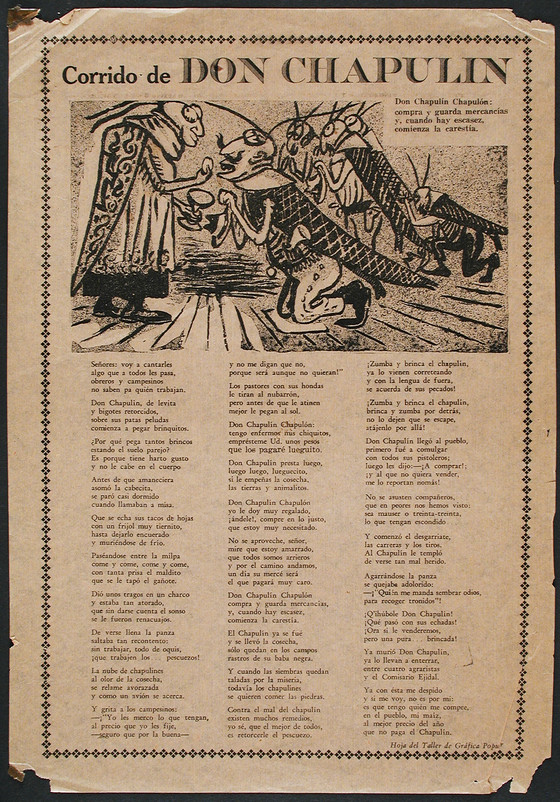Ballad of Don Chapulín (Corrido de Don Chapulín)

© Artists Rights Society (ARS), New York / SOMAAP, Mexico City the copyright holder (works published before 1923, works of decorative art and articles of clothing
Please log in to add this item to your gallery.
View comments
No comments have been posted yet.
Add a comment
Please log in to add comments.
Please log in to add tags.
* Nearly 20,000 images of artworks the museum believes to be in the public domain are available to download on this site.
Other images may be protected by copyright and other intellectual property rights.
By using any of these images you agree to LACMA's Terms of Use.
Ballad of Don Chapulín (Corrido de Don Chapulín)
Prints; lithographs
Lithograph
13 3/8 × 19 3/8 in. (33.97 × 49.21 cm)
Gift of Jules and Gloria Heller (M.2003.92.28)
Not currently on public view